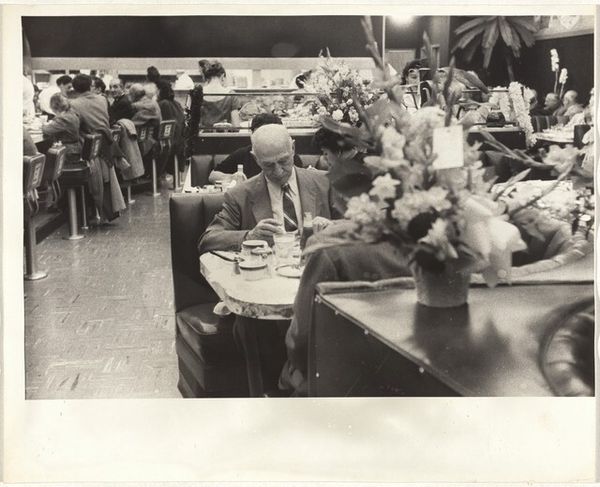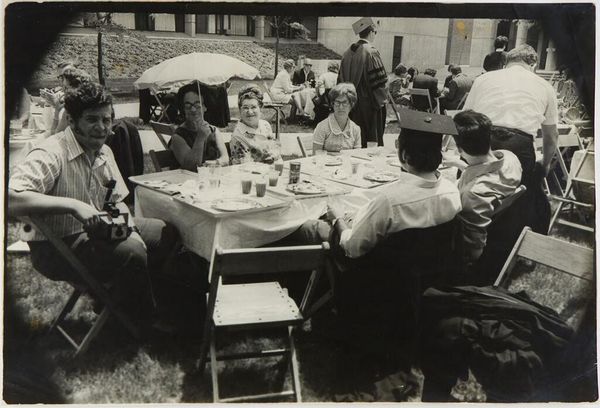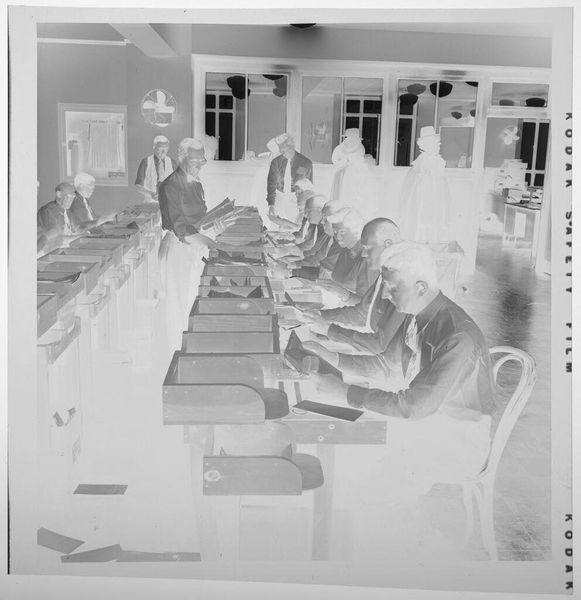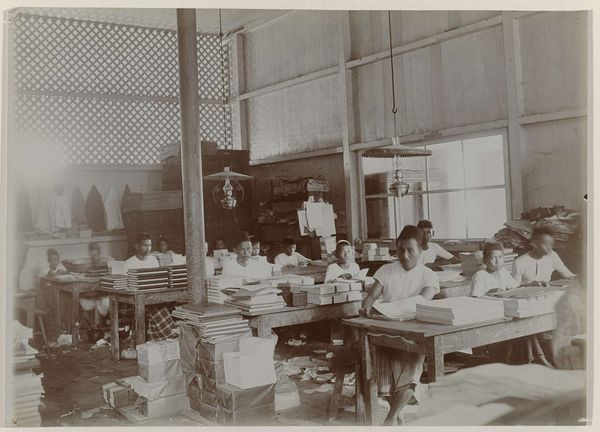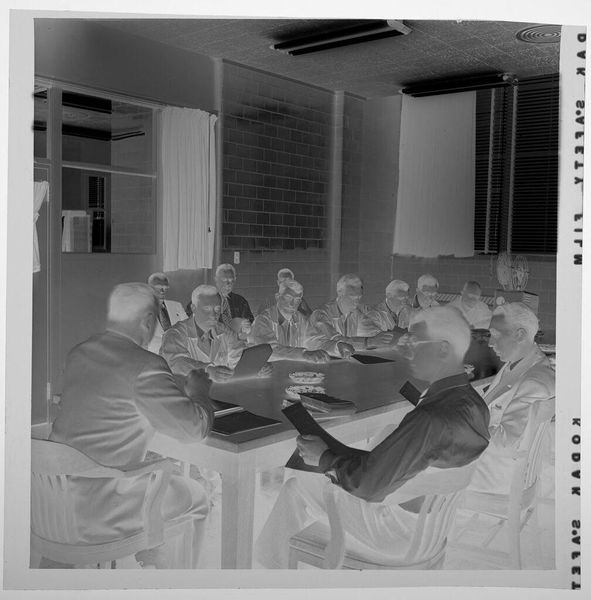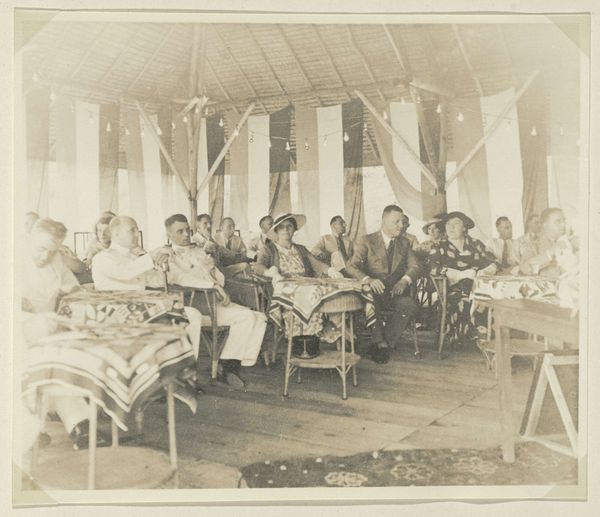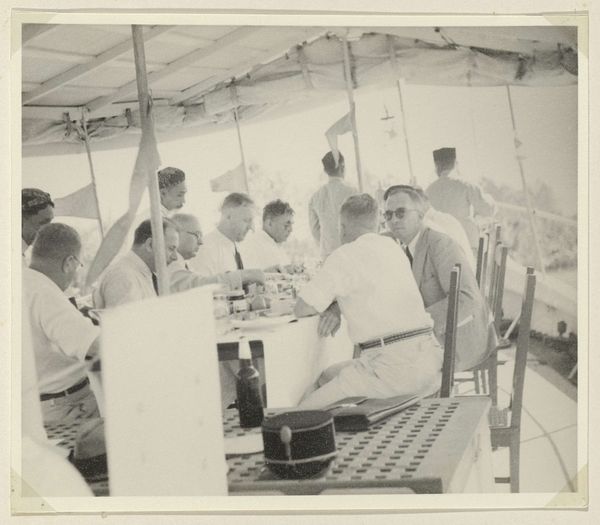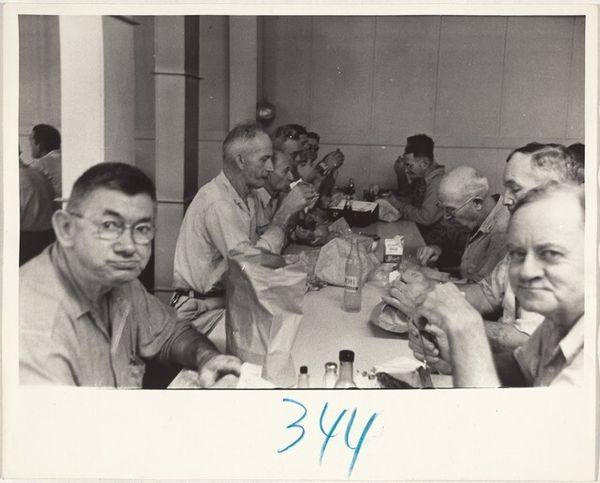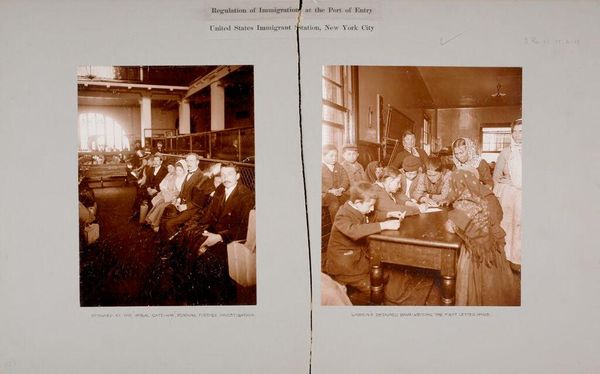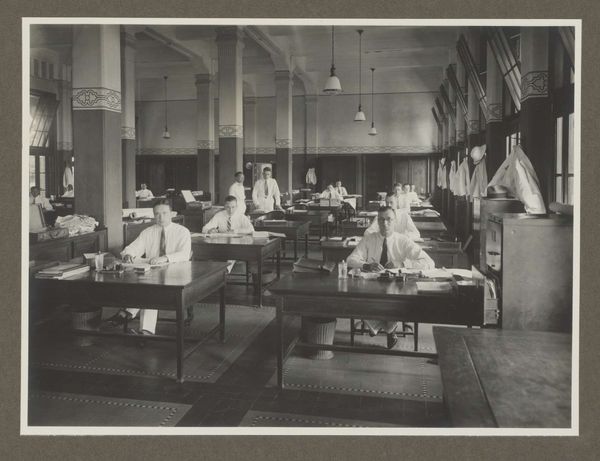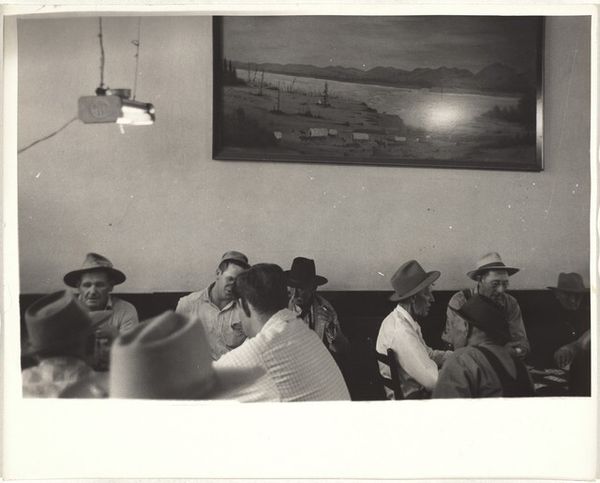
Workers at lunchtime, Esso plant cafeteria--Baton Rouge, Louisiana 1955
0:00
0:00
print, photography, gelatin-silver-print
#
portrait
#
print photography
# print
#
photography
#
group-portraits
#
gelatin-silver-print
#
genre-painting
#
modernism
#
realism
Dimensions: sheet: 20.3 x 25.3 cm (8 x 9 15/16 in.)
Copyright: National Gallery of Art: CC0 1.0
Editor: So this is Robert Frank's "Workers at lunchtime, Esso plant cafeteria--Baton Rouge, Louisiana" from 1955, a gelatin silver print. It’s a candid shot of workers during their lunch break, and I’m struck by how… ordinary it seems, but also kind of melancholic. What do you see in this piece? Curator: I see a potent snapshot of mid-century American labor, rife with socio-political implications. Frank’s work here, part of "The Americans," is not just a documentary photograph; it's a critique. Note the segregation: all white workers. Where are the Black workers in this supposedly shared space? What does that tell us about power dynamics and access at the time? Editor: That's something I didn't notice immediately. So you are saying the apparent "ordinariness" actually masks deeper inequalities? Curator: Precisely. Consider also the setting: a corporate cafeteria. Frank is subtly pointing to the homogenization of labor, the individual subsumed by the industrial machine. How do these men express their identities, confined to such spaces? Editor: They seem almost anonymous. The composition focuses on the backs of heads, creating this feeling of detachment. I'm curious, what did viewers at the time think of this more critical approach? Curator: Initially, it was met with mixed reviews. Some found it unpatriotic, a deliberately bleak depiction of American life. But its unflinching gaze at social realities is exactly what made it so powerful, influencing generations of photographers to question dominant narratives. What do you take away from considering Frank’s intentions alongside the social context? Editor: I see that art can unveil historical and cultural contexts, showing us unspoken, often uncomfortable realities. It challenges viewers like me to look critically beyond the surface of seemingly everyday images. Curator: Exactly. It’s about understanding that even the most "ordinary" images are embedded in complex systems of power and representation.
Comments
No comments
Be the first to comment and join the conversation on the ultimate creative platform.
